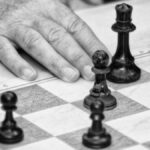Slip and fall accidents are among the leading causes of injury across all age groups. While legal support is available after an incident, prevention remains the most effective way to protect yourself and others. From improving lighting to using safety tools, proactive measures can significantly reduce the risk of accidents at home and in public spaces. If you or a loved one experiences a slip and fall, consulting a slip and fall attorney can help clarify your rights and options.
Keeping Your Home Safe
Your home should be a place of comfort, not a hazard zone. Simple, consistent safety practices can make a major difference in preventing falls.
Clear Clutter and Keep Floors Clean
Keep walkways free of everyday obstacles such as shoes, toys, and bags. Sweep and mop regularly to eliminate spills and debris. Designate storage areas to ensure essential items aren’t left in high-traffic zones.
Ensure Proper Lighting
Poor lighting makes it hard to see hazards. Install bright, energy-efficient bulbs in staircases, hallways, and entry points. Add nightlights in bedrooms and bathrooms to enhance nighttime visibility, and replace burned-out bulbs promptly. Addressing lighting issues is also important when proving negligence in slip and fall cases, as poor visibility is often cited as a contributing factor.
Use Non-Slip Mats and Secure Rugs
Kitchens and bathrooms are high-risk areas due to moisture. Use non-slip mats in these spaces and secure rugs with grip pads or backing. Flatten curled edges to prevent tripping.
Install Grab Bars and Handrails
Sturdy handrails on stairs and bathroom grab bars are essential, especially for older adults or those with limited mobility. Install them at safe heights and test for stability to ensure reliable support.
Promoting Safety in Public Spaces
Public areas present different challenges, such as foot traffic and weather-related hazards. Safety efforts in these environments help protect the wider community.
Maintain Walkways and Stairs
Cracked pavement, loose tiles, and uneven steps are common dangers. Regular inspections and timely repairs prevent accidents. Property owners should establish maintenance routines and encourage public reporting of hazards.
Improve Lighting
Adequate lighting in parking areas, stairwells, and common paths helps people identify ice, debris, or uneven surfaces. Motion-sensor lights are a great way to improve visibility without increasing energy use.
Use Clear Signage
Visible, well-placed signs alert pedestrians to wet floors, ongoing maintenance, or temporary obstacles. Use bold visuals and multilingual warnings to ensure understanding across diverse communities.
Leveraging Technology and Community Involvement
Modern tools and local engagement strengthen safety efforts.
Implement Smart Safety Technology
AI-powered sensors, spill detectors, and wearable fall alerts can detect hazards or send emergency alerts. These tools improve response times and gather data for long-term safety planning.
Educate and Engage the Community
Workshops and awareness campaigns led by schools, businesses, or local centers can teach people how to recognize and reduce risks. A culture of shared responsibility leads to safer environments for everyone.
Conclusion
Preventing slip-and-fall accidents starts with awareness and action. From decluttering your home to advocating for safer public spaces, small changes lead to big improvements. Embrace preventative habits, use available technologies, and support community education to create a safer world—one step at a time.






